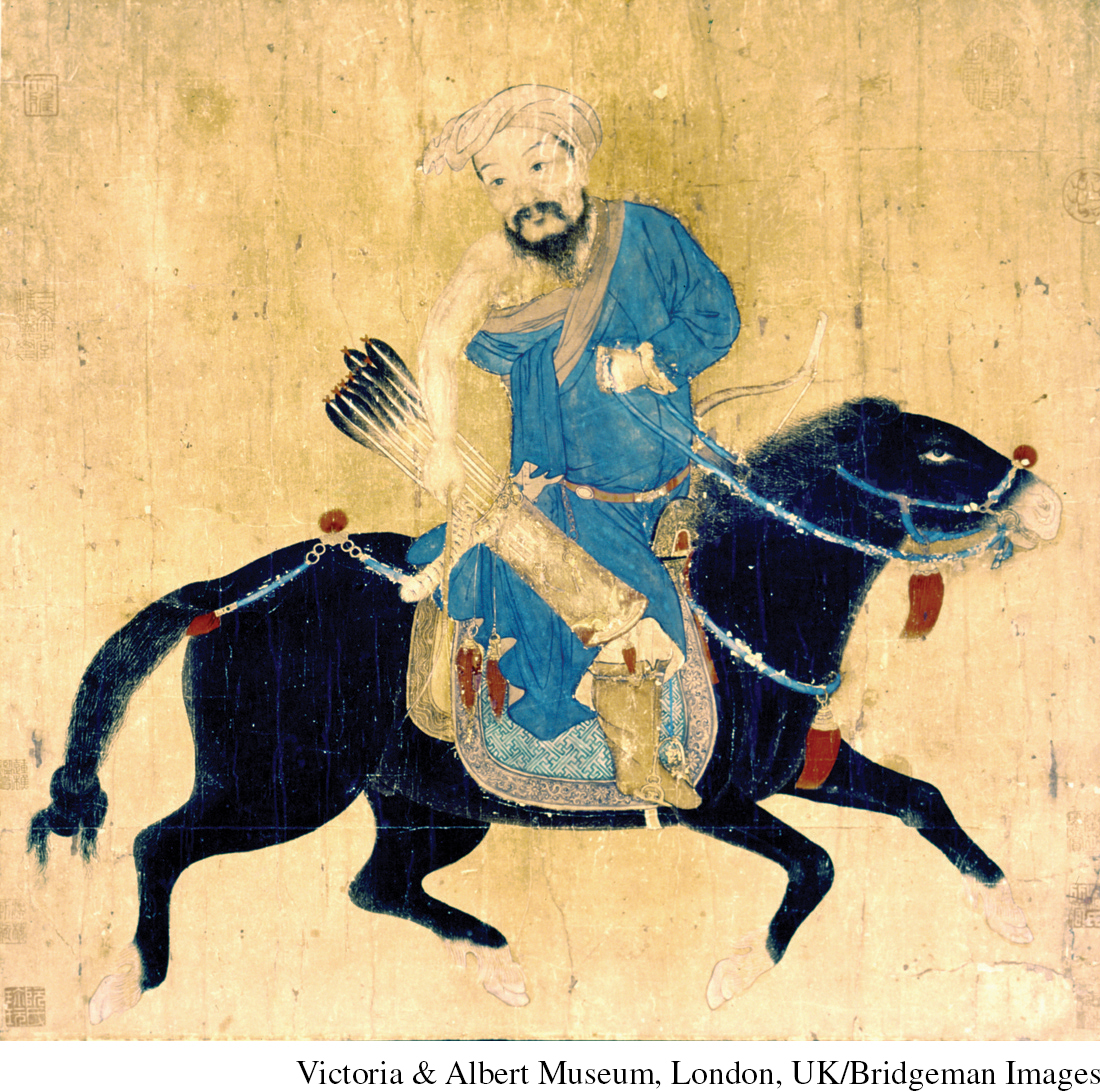Explaining the Mongol Moment
Like the Roman Empire but far more rapidly, the Mongol realm grew of its own momentum without any grand scheme or blueprint for world conquest. Each fresh victory brought new resources for making war and new threats or insecurities that seemed to require further expansion. As the empire took shape and certainly by the end of his life, Chinggis Khan had come to see his career in terms of a universal mission. “I have accomplished a great work,” he declared, “uniting the whole world in one empire.”11 Thus the Mongol Empire acquired an ideology in the course of its construction.

What made this “great work” possible? The odds seemed overwhelming, for China alone outnumbered the Mongols 100 to 1 and possessed incomparably greater resources. Furthermore, the Mongols did not enjoy any technological superiority over their many adversaries. They did, however, enjoy the luck of good timing, for China was divided, having already lost control of its northern territory to the pastoral Jurchen people, while the decrepit Abbasid caliphate, once the center of the Islamic world, had shrunk to a fraction of its earlier size. But clearly, the key to the Mongols’ success lay in their army. According to one scholar, “Mongol armies were simply better led, organized, and disciplined than those of their opponents.”12 In an effort to diminish a divisive tribalism, Chinggis Khan reorganized the entire social structure of the Mongols into military units of 10, 100, 1,000, and 10,000 warriors, an arrangement that allowed for effective command and control. Conquered tribes, especially, were broken up, and their members were scattered among these new units, which enrolled virtually all men and supplied the cavalry forces of Mongol armies. A highly prestigious imperial guard, also recruited across tribal lines, marked the further decline of the old tribalism as a social revolution, imposed from above, reshaped Mongol society.
An impressive discipline and loyalty to their leaders characterized Mongol military forces, and discipline was reinforced by the provision that should any members of a unit desert in battle, all were subject to the death penalty. More positively, loyalty was cemented by the leaders’ willingness to share the hardships of their men. “I eat the same food and am dressed in the same rags as my humble herdsmen,” wrote Chinggis Khan. “I am always in the forefront, and in battle I am never at the rear.”13 (See Working with Evidence, Source 11.2.) Such discipline and loyalty made possible the elaborate tactics of encirclement, retreat, and deception that proved decisive in many a battle. Furthermore, the enormous flow of wealth from conquered civilizations benefited all Mongols, though not equally. Even ordinary Mongols could now dress in linens and silks rather than hides and felt, could own slaves derived from the many prisoners of war, and had far greater opportunities to improve their social position in a constantly expanding empire.
To compensate for their own small population, the Mongols incorporated huge numbers of conquered peoples into their military forces. “People who lived in felt tents”—mostly Mongol and Turkic pastoralists—
A further element in the military effectiveness of Mongol forces lay in a growing reputation for a ruthless brutality and utter destructiveness. Chinggis Khan’s policy was clear: “Whoever submits shall be spared, but those who resist, they shall be destroyed with their wives, children and dependents … so that the others who hear and see should fear and not act the same.”15 City after city was utterly destroyed, and enemy soldiers were passed out in lots to Mongol troops for execution, while women and skilled craftsmen were enslaved. Unskilled civilians served as human shields for attacks on the next city or were used as human fill in the moats surrounding those cities. (See Working with Evidence, Source 11.3.)
One scholar explained such policies in this way: “Extremely conscious of their small numbers and fearful of rebellion, Chinggis often chose to annihilate a region’s entire population, if it appeared too troublesome to govern.”16 These policies also served as a form of psychological warfare, a practical inducement to surrender for those who knew of the Mongol terror. Historians continue to debate the extent and uniqueness of the Mongols’ brutality, but their reputation for unwavering harshness proved a military asset.
Underlying the purely military dimensions of the Mongols’ success was an impressive ability to mobilize both the human and material resources of their growing empire. Elaborate census taking allowed Mongol leaders to know what was available to them and made possible the systematic taxation of conquered people. An effective system of relay stations, about a day’s ride apart, provided rapid communication across the empire and fostered trade as well. Marco Polo, the Venetian trader who traveled through Mongol domains in the thirteenth century, claimed that the Mongols maintained some 10,000 such stations, together with 200,000 horses available to authorized users. The beginnings of a centralized bureaucracy with various specialized offices took shape in the new capital of Karakorum. There scribes translated official decrees into the various languages of the empire, such as Persian, Uighur, Chinese, and Tibetan.
Other policies appealed to various groups among the conquered peoples of the empire. Interested in fostering commerce, Mongol rulers often offered merchants 10 percent or more above their asking price and allowed them the free use of the relay stations for transporting their goods. In administering the conquered regions, Mongols held the highest decision-
SUMMING UP SO FAR
What accounts for the political and military success of the Mongols?